
Economics of grafting fruit trees
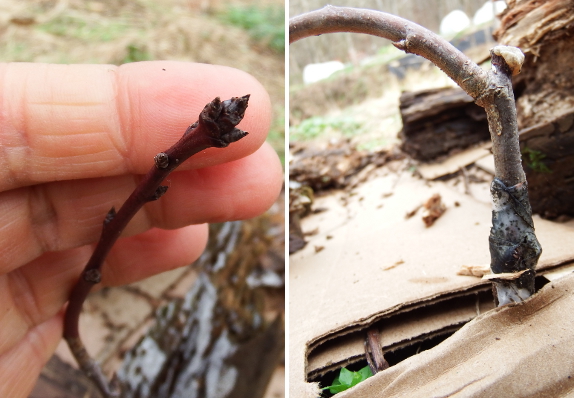
Grafting is an easy
choice if you're trying to propagate a fruit-tree variety that's not
available for sale, either because it's too rare or because you bred the
variety yourself. On the other hand, if you're just trying to save money with grafting, then your success rate will determine whether or not you should pull out the knife.
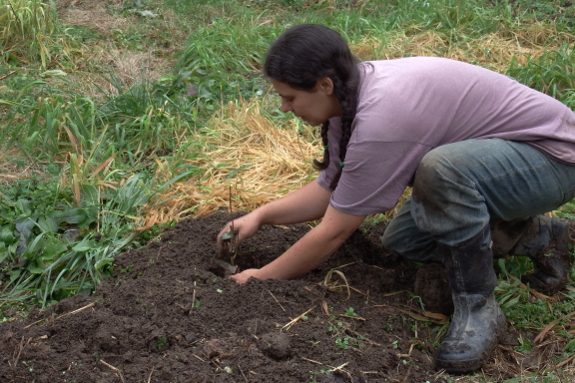 With apples,
grafting is generally a no-brainer for me. Even when I set out my new
graftees in too shady of spot this past spring, I still saw a 90%
success rate, meaning I would've ended up paying only about $3.33 per
tree even if I hadn't gotten the rootstocks ultra cheap as part of a grafting workshop. Usually, my apple grafts take closer to 100% of the time.
With apples,
grafting is generally a no-brainer for me. Even when I set out my new
graftees in too shady of spot this past spring, I still saw a 90%
success rate, meaning I would've ended up paying only about $3.33 per
tree even if I hadn't gotten the rootstocks ultra cheap as part of a grafting workshop. Usually, my apple grafts take closer to 100% of the time.
My pear success rate was
considerably lower (40%) this year, mostly because I put a third of the
baby trees too close to a rhubarb plant that promptly shaded them out
and then forgot to weed the rest for half the summer. Even so, the resulting trees cost only $7.50 apiece, which isn't bad for an heirloom variety.
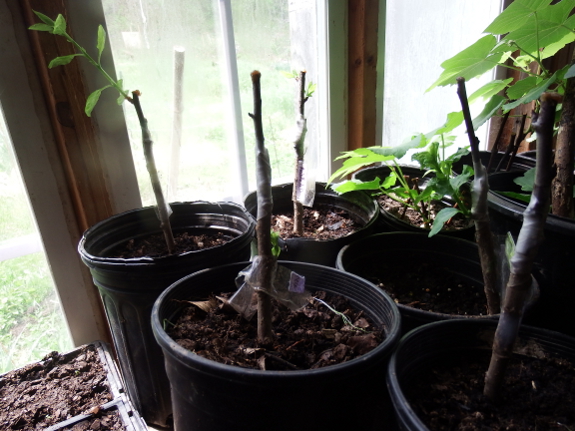 I did considerably worse with my plums, though. I dormant-season grafted instead of using the recommended summer bud grafting on these stone fruit because I was trying to save two plum trees that were splintered by heavy snow falling off the barn roof last winter.
The good news is --- the tree that entirely perished will remain on our
farm after all since its grafted scionwood survived and thrived. The
bad news is --- with a success rate of only one tree out of five, I
probably would have been better off just buying a replacement tree.
I did considerably worse with my plums, though. I dormant-season grafted instead of using the recommended summer bud grafting on these stone fruit because I was trying to save two plum trees that were splintered by heavy snow falling off the barn roof last winter.
The good news is --- the tree that entirely perished will remain on our
farm after all since its grafted scionwood survived and thrived. The
bad news is --- with a success rate of only one tree out of five, I
probably would have been better off just buying a replacement tree.
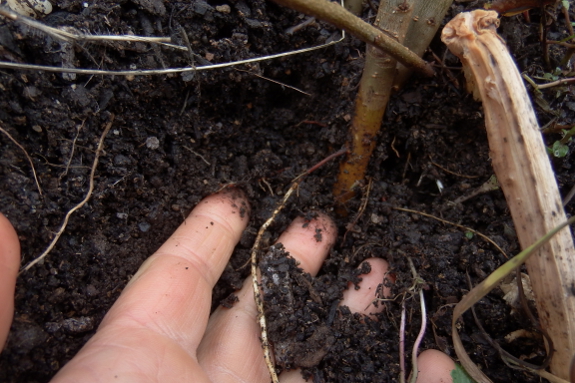
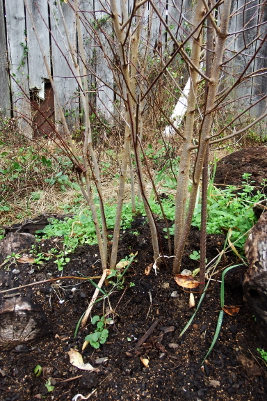 That
said, I love having useful skills, so I plan to persevere and try to
get better at grafting stone fruits. And the second damaged plum tree
told me she'd be glad to help fund the endeavor. While the top of the
tree completely broke off after its snow deluge, the roots sent up
copious new growth, which I then stooled
over the course of the summer. And, sure enough, the buried portion of
the new growth promptly grew roots, turning each sprout into a potential
new rootstock for future trees.
That
said, I love having useful skills, so I plan to persevere and try to
get better at grafting stone fruits. And the second damaged plum tree
told me she'd be glad to help fund the endeavor. While the top of the
tree completely broke off after its snow deluge, the roots sent up
copious new growth, which I then stooled
over the course of the summer. And, sure enough, the buried portion of
the new growth promptly grew roots, turning each sprout into a potential
new rootstock for future trees.
Good thing too since the
surviving plum tree wiggles when I push it with my hand --- not a good
sign for its long-term prospects. I plan to try a few different grafting
techniques this year with my copious plum rootstock and will hope I
work the kinks out of the procedure in the process. No matter how I cut
it, though, I might as well try. After all, any trees that result from
this experiment will be 100% free.
Want more in-depth information? Browse through our books.
Or explore more posts by date or by subject.
About us: Anna Hess and Mark Hamilton spent over a decade living self-sufficiently in the mountains of Virginia before moving north to start over from scratch in the foothills of Ohio. They've experimented with permaculture, no-till gardening, trailersteading, home-based microbusinesses and much more, writing about their adventures in both blogs and books.
Want to be notified when new comments are posted on this page? Click on the RSS button after you add a comment to subscribe to the comment feed, or simply check the box beside "email replies to me" while writing your comment.
